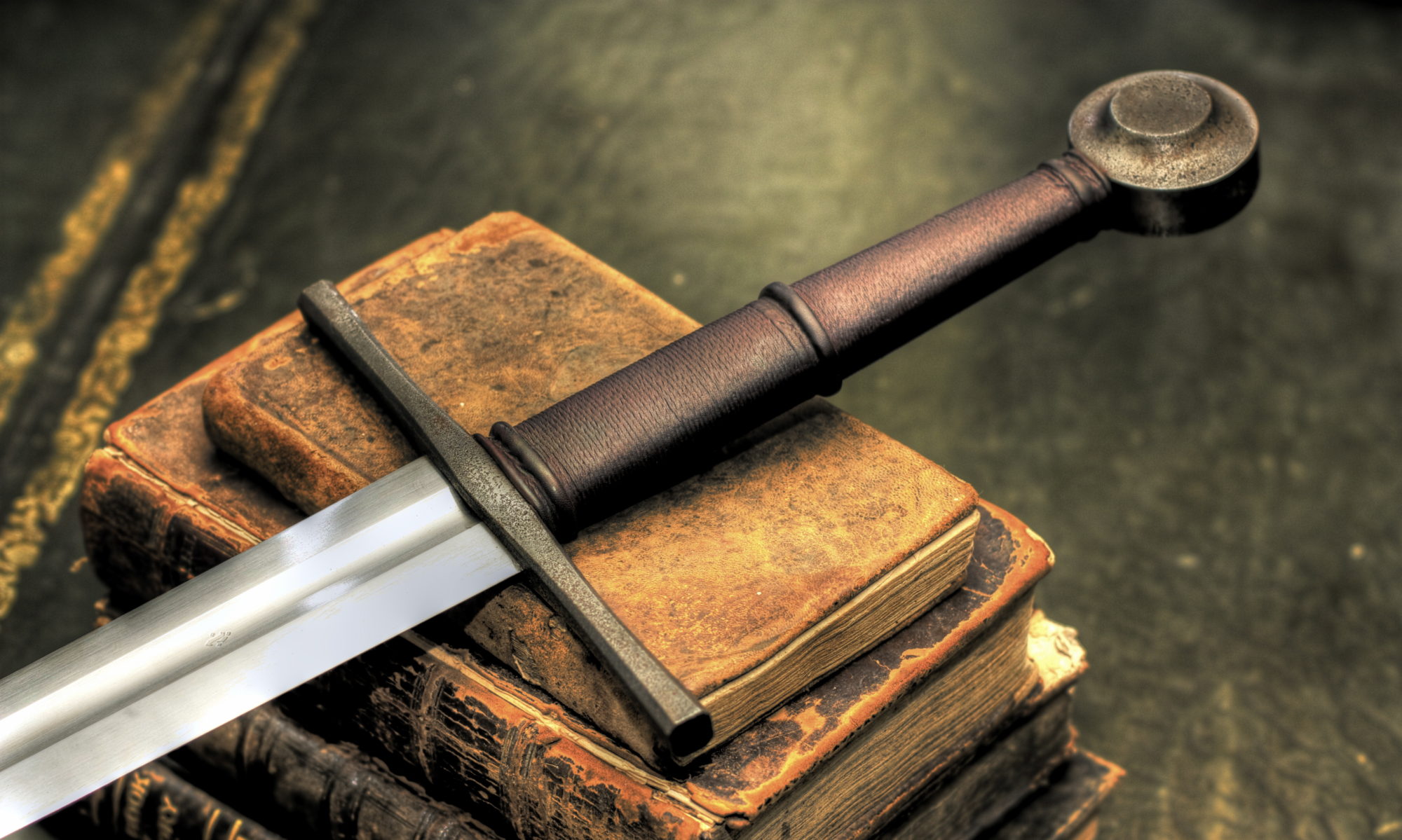Hearthside
The castle of Hearthside rose like a great pinnacle of polished grey granite from the end of an arm of jagged rock that jutted southward in a spur from the Snowies, the lofty mountains that formed the northern border of the Realm, beyond which lay the icy cold of the barren tundra. The southward spur split the northern quarter of The Realm in two, and at its southernmost end ascended the fortress of Hearthside. Tall and strong it stood, reaching skyward like a great sword thrust upward in the hand of a giant warrior.
From its lofty perch at the southern point of the Snowies, Hearthside looked out southward over a vast, far reaching valley. A winding road with sheer vertical sides snaked upward toward the castle from the fertile fields below at a point where the valley drew close to the feet of the mountains. The road ended at the great gate of Hearthside, or before it anyway, for the road ended in a thousand foot cliff before the entrance to the castle, and only the massive drawbridge and the two small rope footbridges on either side of it spanned the last hundred feet across a dizzying chasm to the great gate of Hearthside.
The eastern walls of the towers and pinnacles of Hearthside gleamed at first light from the rising sun, at which time the trumpets would sound in a grand flourish and the great drawbridge would lower to the road before it, spanning the gulf between the castle and the end of the road and opening the castle for the day. More trumpets announced to both the inhabitants of the castle and the city below the passage of each hour of the day.
The lowering of the great drawbridge allowed the passage of the wagonloads and large carts of goods that came and went from the castle, along with the crowds of people from all twelve clans who came and went from their homes in various parts of The Realm.
At sunset, the western walls and spires of Hearthside would take their turn and glow with the light of the dying sun, and the trumpets would sound again in a diminishing chorus as the drawbridge was raised for the night. As dusk gave way to night, torchbearers would light the huge lamps of oil that hung from iron posts along both sides of the narrow road that wound downward from the castle. As night deepened, the city and the farms in the valley below could look up beyond the lamps of the castle road and see the glow of torchlight from the many castle windows, shimmering like hundreds of golden stars.
At night, or when the drawbridge was raised in defense, foot traffic could still reach the castle in single file across two narrow rope bridges that spanned the deep vertical drop-off at the end of the castle road. The footbridges reached from either side of the widened end of the castle road to two ledges before massive iron doors that flanked both sides of the immense drawbridge. Normally, the eastern bridge was used for approaching the castle, while the western bridge served those who were leaving. The narrow footbridges lay under the watchful gaze of the castle guard above who were armed with crossbows and, as a last resort when the castle was under attack, the guard could instantly cut away the footbridges from the castle to prevent it from being reached. After crossing one of the narrow footbridges to the far ledge, visitors would announce their business to the door guard through a narrow window next to the iron door. Upon approval by the guard, the iron door would be opened and the visitor would enter into the keep, where additional guards could further challenge any individuals who became threatening. The keep was a small rectangular area beyond the drawbridge and the two iron doors and had high walls of stone where guards above observed the coming and going of castle visitors below. The keep was where the changing of the gate guards took place.
Beyond the keep was a second gate, an arched tunnel forty feet in length that could be closed in its middle by lowering a huge iron portcullis. Passing through the tunnel, visitors entered the castle proper and came upon the huge courtyard filled with taverns and shops of all types where merchants bartered and sold their wares. It was here that the frequent celebrations were held. The courtyard was paved with flagstones in various colors that were laid out like a great map showing all parts the realm in a mosaic of color. In the center of the courtyard a great fountain spewed forth in an ever-changing display of sparkling water. There were always minstrels and flute players at the edge of the fountain playing music to delight the crowds.
Cobblestone streets lined with green shrubs and bright flowers led off to the right and left from the rear corners of the courtyard and wound through more portcullised tunnels to all parts of the castle. Down the left street were the lodging for the troops, the armory, the stables for the horses, and the blacksmith. Down the right street were more shops, taverns, the lodgings for the clan leaders and guests of the castle, and the great storehouses filled with food and drink.
Rising majestically at the rear of the courtyard between the two streets was the entrance to the tower of the Court, which housed the banquet hall, the treasury, and the meeting hall of the clan leaders, where the Great Council would debate and legislate the laws of the realm. Above the meeting hall of the Great Council was the Hall of the King, where stood a massive stone fireplace and hearth from which burned a warm fire both day and night. Reached by a massive granite staircase near the entrances to the meeting hall of the Great Council, this great hall was open to all citizens of The Realm, and was accessible at all times of the day and night for anyone who dwelt within the walls of the castle. They could come to mingle freely with others they found there, find solace for weariness, or find laughter to lift their spirits, for the hall was attended at all times with castle servants to fulfill any need; It was this unique feature that gave rise to the name Hearthside. Finally, the King and his family lived higher up in the castle in rooms above the Hall of the King, reaching up into the tallest of the spires above.
Behind the castle proper, partway up the arm of rock that jutted down from the mountains, there lay on top a wide depression where tall grass grew in a natural basin. Known as the Greensward, it was inaccessible except from the castle stables in the left rear corner of the castle. The basin served as a place to feed and train the horses of the Border Guard and the Knights of The Realm. A tall waterfall cascaded down from the sheer walls at the far end of the grassy basin opposite the castle into a deep pool, Mirror Lake, out of which flowed the cold clear stream that brought water both to the basin and to the castle and its inhabitants.
On tall spires that pierced the billowy white clouds above flew the varied Tartáine banners of the 12 clans, and above them all flew the flag of The Realm, the united clans represented by twelve white stars arcing across a bright field of violet.
Hearthside was a natural location for a fortress; the sheer walls of the surrounding mountains made the castle inaccessible except up the winding castle road, the end of which was easily defended from the tall, thick walls above due to the difficulty crossing the wide chasm.
The fortress was occupied by men but was not built by them, for it was one of the last remnants from the immortals of old. Though it seemed a massive structure to the avanyar, it was in truth but a simple outpost of the ancient illuminar, and paled in comparison with their great halls in the forgotten days. But Shaitan

and his demon hordes threw down into utter ruin all of those mighty fortresses when they swept through the realm so very long ago. Paling in comparison to those halls of old, Hearthside was simply overlooked by the evil horde, and so was found standing but empty by the avanyar when they came into the realm long after.

